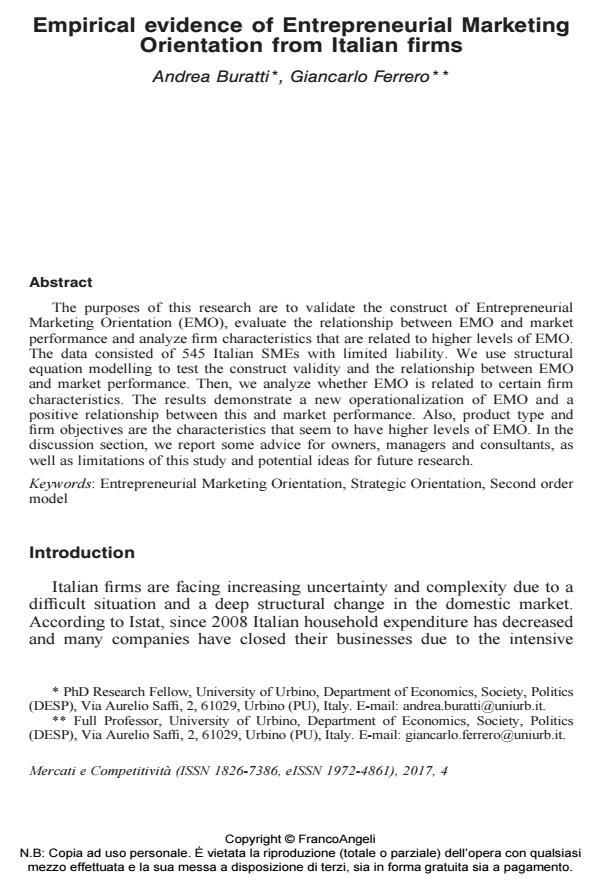Empirical evidence of Entrepreneurial Marketing Orientation from Italian firms
Journal title MERCATI & COMPETITIVITÀ
Author/s Andrea Buratti, Giancarlo Ferrero
Publishing Year 2017 Issue 2017/4
Language English Pages 23 P. 151-173 File size 120 KB
DOI 10.3280/MC2017-004008
DOI is like a bar code for intellectual property: to have more infomation
click here
Below, you can see the article first page
If you want to buy this article in PDF format, you can do it, following the instructions to buy download credits

FrancoAngeli is member of Publishers International Linking Association, Inc (PILA), a not-for-profit association which run the CrossRef service enabling links to and from online scholarly content.
The purposes of this research are to validate the construct of Entrepreneurial Marketing Orientation (EMO), evaluate the relationship between EMO and market performance and analyze firm characteristics that are related to higher levels of EMO. The data consisted of 545 Italian SMEs with limited liability. We use structural equation modelling to test the construct validity and the relationship between EMO and market performance. Then, we analyze whether EMO is related to certain firm characteristics. The results demonstrate a new operationalization of EMO and a positive relationship between this and market performance. Also, product type and firm objectives are the characteristics that seem to have higher levels of EMO. In the discussion section, we report some advice for owners, managers and consultants, as well as limitations of this study and potential ideas for future research.
Keywords: Entrepreneurial Marketing Orientation, Strategic Orientation, Second order model
Andrea Buratti, Giancarlo Ferrero, Empirical evidence of Entrepreneurial Marketing Orientation from Italian firms in "MERCATI & COMPETITIVITÀ" 4/2017, pp 151-173, DOI: 10.3280/MC2017-004008